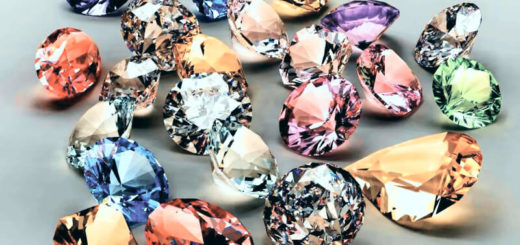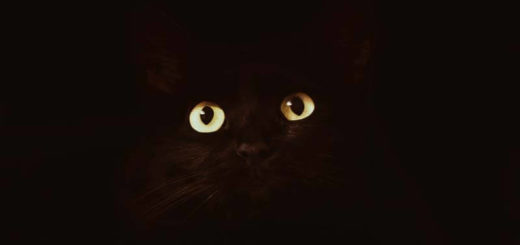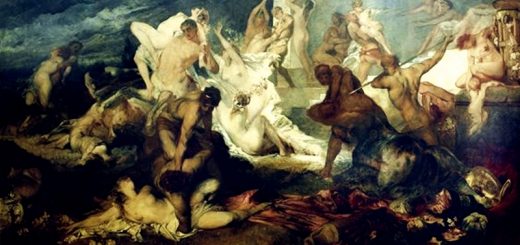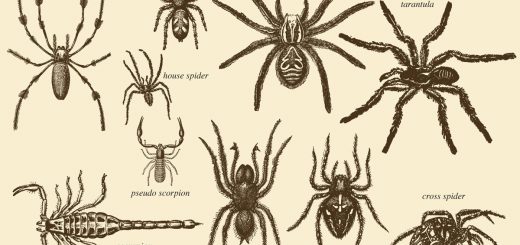Brook horses or Water horses of Celtic and Nordic Folklore
Water horses or Brook horses are creatures of European folklore. Although the ancient Greeks, knew the Hippocampus (water horse) we find the tradition of these creatures mostly in British and Celtic Europe, Scandinavia and areas where Celtic and Nordic culture intersect, such as the island groups between Scotland and Iceland.
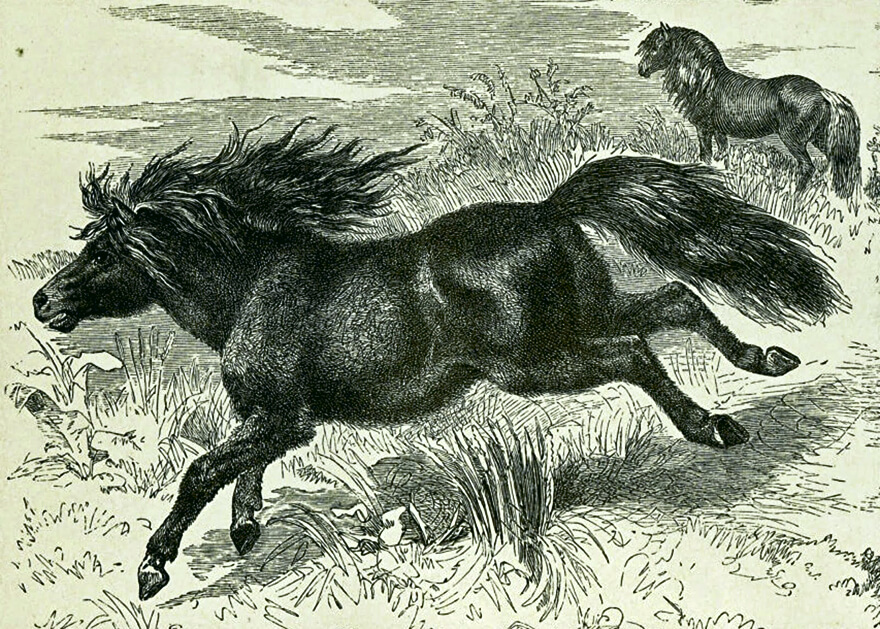
Kelpies (1886). Illustration depicting these brook horses or water horses as ordinary ponies
Brook Horse or Water Horse
A Brook Horse or Water Horse is a water demon that generally lures weary travelers to “ride the horse.” Subsequently, the phantom animal stampedes and, depending on the type of Brook horse, sheds the startled rider when a river, stream, swamp or lake is reached or maims or drowns the victim.
In some folklore stories, however, one manages to tame a Brook horse and make it plow an entire field with demonic power in a very short time, for example. Usually Brook horses appear in the guise of a hefty pony, a pony or horse with a strange unusually long tail or wheel-shaped tail, or as a more demonic hybrid between horse and aquatic creature. Examples of Brook horses include the:
Bäckahäst or Bækhest
In the Scandinavian languages the Bäckahäst or Bækhest is a brook-horse. A creature of Scandinavian mythology, the Bäckahäst was a beautiful white horse that would emerge from bodies of water such as lakes or ponds, particularly during foggy weather. Anyone who climbed onto its back would not be able to get off again. The horse would then jump into a river, drowning the rider, whether adult or child. The brook horse could also be harnessed and made to plough, either because it was trying to trick a person or because the person had tricked the horse into it. It has a close parallel in the Nykur of the Faeroe Islands, the Scottish Kelpie, and the Welsh Ceffyl Dŵr.
Boobrie
The Boobrie is a mythological shape-shifting entity inhabiting the lochs of the west coast of Scotland. It commonly adopts the appearance of a gigantic waterbird resembling a cormorant or great northern diver, but it can also materialize in the form of various other mythological creatures, such as a water bull. Being a generally malevolent entity, the Boobrie typically preys on livestock being transported on ships, but it is also fond of otters, of which it consumes a considerable number. In its manifestation as a water horse the creature is able to gallop across the surface of lochs as if galloping over solid ground. During the summer months it is seen infrequently as a large insect, sucking the blood of horses.
Brag
A Brag or Braag is a mischievous shape-shifting goblin in the folklore of Northumberland and Durham and often takes the form of a horse or donkey. It is fond of letting unsuspecting humans ride on its back before bucking them off into a pond or bush and running away laughing. One notable example is the Picktree Brag, an apparition that used to haunt the village of Picktree, near Chester-le-Street. The Brag was said to appear like a calf, also like a galloway; once it appeared like four men holding up a white sheet, and once like a naked headless man; but more often like a coach-horse or a male ass. One who mounted the brag was thrown off into a pond at the ‘Four ‘lonin ends’, while the brag ran off laughing. It was also said to appear at the time of death, or to herald some misfortune. A Brag at Humbleknowe was never seen but made hideous noises in the night.
Cabyll-ushtey
In Manx folklore the Cabyll-ushtey appears in only a few Manx legends. It is a dangerous Water-spirit, pale-grayish in color, and similar to the Gaelic Each uisge. Cabyll-ushtey literally means “water horse” in Manx (cabyll = “horse” and ushtey = “water”). Like all Water-horses, the Cabyll-ushtey lives in a lake or deep river and lures humans to follow it into the water. When a human follows it into the water, the beast pulls its victim under the surface and tears it to pieces. The Cabyll-ushtey attracts both humans and animals. Furthermore, the Water-horse brings unrest to groups of people and herds of animals, causing potential victims to run away or stampede (in case of cattle), and scatter the people or animals widely. The Cabyll-ushtey then catches the slowest person or animal and kills the unlucky one. The creature may occasionally steal children.
Nykur
In Faroese, the word Nykur refers specifically to a supernatural horse, described in one Faroese text thus: “The Nykur dwells in water; at the bottom, down in the depths, he has his lair; from here he often goes onto land and it is not good to meet him.”
Sometimes he is like a beautiful little horse which seems to be good and tame, and thus he lures people to draw near to him to pat him and stroke him along the back. But when they come to touch the tail, they become stuck fast to him and then he releases no-one, but he drags them with him to the bottom of the water. Sometimes he encounters people in human form, as a handsome youth, to lure young women to himself, and promises them joy and gladness in his hall if they want to go along with him. But if they get a suspicion of who he is, when they are giving themselves away, such that they can call him by his true name – Nykur – then he loses the power over them and must release them and go along into his waters.
Other Brook horses or Water horses
There are also the Welsch Ceffyl Dŵr, the Each-uisge (also: Each-uisgee, Each-uisce – anglicized as Aughisky or Ech-ushkya in Ireland, the Glashtyn or Glashtin (Manx English: Glashtin, Glashtan or Glashan) is a water-spirit from Manx folklore, that often appears as a weak foal or a year-old lamb and the Kelpie (also Kelpy; in Scottish Gaelic Colpach, “heifer”) is a water-spirit that appears in Scottish folklore.
Nuckelavee
There is also the infamous Nuckelavee or Nuckalavee is a horse-like demon from Orkney-mythology that combines equine and human elements. It has its origins in Norse mythology, and British folklorist Katharine Briggs called it “the nastiest” of all the demons of Scotland’s Northern Isles. The Nuckelavee’s breath was thought to wilt crops and sicken livestock, and the creature was held responsible for droughts and epidemics on land – despite being predominantly a sea-dweller. The creature resembles a Centaur, with an enormous gaping mouth and a single huge eye that burns with a red flame. The most gruesome detail of his appearance is the fact that he has no skin. Black blood flows through his yellow veins and his pale tendons and powerful muscles are visible as a pulsating mass. He has an aversion to running water.
Nuggle
The Nuggle, Njuggle, or Neugle, is a mythical water-horse of primarily Shetland folklore, where it is also referred to as a Shoepultie or Shoopiltee, particularly in the northernmost islands.
Nykur
In Faroese, the word Nykur refers specifically to a supernatural horse, described in one Faroese text thus: “The Nykur dwells in water; at the bottom, down in the depths, he has his lair; from here he often goes onto land and it is not good to meet him.”
Sometimes he is like a beautiful little horse which seems to be good and tame, and thus he lures people to draw near to him to pat him and stroke him along the back. But when they come to touch the tail, they become stuck fast to him and then he releases no-one, but he drags them with him to the bottom of the water.
Phantom horses not related to water
European folklore also knows several phantom horses or horse shaped demons that are not necessarily connected to water or to the horse shape as their sole mean of appearance. Some examples are Gytrash, who can also appear as a horrible ghostly dog, Hazelrigg Dunnie, Helhäst, Pooka, the Cheval Mallet and the Dianos
You may also like to read:
spirit-beings-in-european-folklore/
water spirits in Eastern European folklore | list of 18 species





